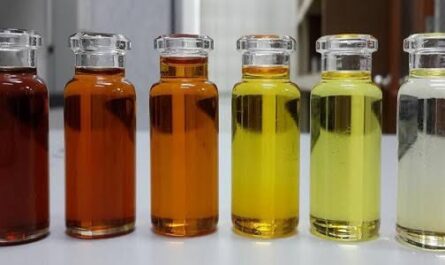Recovered Carbon Black: An Innovative Approach to Reduce Waste and Increase Sustainability
What is Recovered Carbon Black?
RCB, also known as reclaimed carbon black or recycled carbon black, is carbon black that is produced from the pyrolysis or thermal decomposition of scrap tires or other rubber materials. Carbon black is a form of amorphous carbon that is commonly used as a pigment and reinforcing filler in tires and other rubber products. When tires reach the end of their useful life, they can be recycled to produce RCB instead of being sent to landfills.
The Process of Producing RCB
The process of producing RCB from scrap tires generally involves these main steps:
– Collection and preprocessing – End-of-life tires are collected from various sources such as automotive repair shops and recycling facilities. They are cleaned and shredded or granulated to prepare the material for further processing.
– Pyrolysis – The tire rubber granules are fed into a rotating kiln where they are heated to high temperatures in the absence of oxygen. This causes the rubber molecules to break down through pyrolysis. Gases, oils, and RCB are produced.
– Recovery of carbon black – The carbon black is separated from the pyrolysis gases using a baghouse filtration system. The carbon black particles are collected while the gases are treated for further processing or combustion.
– Grinding and upgrading – The RCB is ground to the desired particle size and may undergo additional processing like degassing or oxidation to upgrade its properties for use in new rubber products.
– Quality testing – Thorough quality testing is conducted to verify that the RCB meets industry specifications for properties like surface area, particle size distribution, and chemical composition before it can be used.
Benefits of Using RCB
Using RCB produced from waste tires provides several important environmental and economic benefits:
– Waste reduction – It diverts millions of end-of-life tires from landfills and incinerators every year, eliminating a major waste disposal problem. This extends the useful life of tire materials.
– Resource conservation – RCB conserves natural resources by replacing virgin carbon black that is produced from non-renewable fossil fuels in a resource-intensive process. This saves energy during manufacturing.
– Greenhouse gas reductions – Pyrolyzing tires for carbon black recovery prevents the methane emissions that would occur if tires decomposed in landfills. It also avoids the need to extract and process fossil fuels for virgin carbon black production.
– Cost savings – For rubber product manufacturers, RCB is often less expensive than virgin grades. Using it as a reinforcement filler allows companies to reduce costs without compromising performance.
– Circular economy – Producing RCB closes the loop in the circular tire economy by creating new value from old tires. It demonstrates an innovative industrial symbiosis between the tire and rubber industries.
Applications and Performance of RCB
RCB has seen increasing usage as a replacement for virgin carbon black in a variety of rubber products thanks to advancements in processing techniques:
– Tire production – RCB is commonly used in the tread and sidewall formulations of new tires, blended at levels up to 30% substitution depending on specifications. It provides equivalent reinforcement properties.
– Mechanical rubber goods – Industries like belt, hose, and automotive parts manufacturing use RCB in formulations for molded and extruded rubber components.
– Footwear rubber – Replacement of up to 20% of virgin carbon black content is possible in shoes, boots, and other footwear without impacting physical properties.
– Rubber modified asphalt – Road paving and construction applications are incorporating RCB at levels under 10% as a sustainable filler for asphalt cement and other rubberized asphalt products.
Quality controls and analysis of the physical and chemical properties of RCB have demonstrated it can equal or exceed the performance of more expensive virgin grades. With further research and development, the potential uses of this sustainable material continue to grow.
Challenges and Opportunities in the RCB Industry
Like any emerging sector, there remain challenges that must be addressed for RCB to achieve its full potential:
– Establishing consistent quality – Ensuring tight specifications and batch-to-batch consistency comparable to virgin carbon black is crucial for market acceptance. Continuous quality improvement processes are needed.
– Building infrastructure – Centralized collection and recycling hubs are still needed in some regions to efficiently aggregate discarded tires on a large scale and transport them to pyrolysis facilities economically.
– Gaining customer confidence – Promoting the quality, performance, sustainability credentials and cost-competitiveness of RCB through research, testing partnerships and supply agreements helps overcome customer hesitation about using “secondary” materials.
– Securing stable demand – Long-term offtake agreements and developing new applications pull RCB beyond a niche status and cement its role as an established feedstock instead of just a waste management solution.
– Fostering open collaboration – Cross-industry cooperation between tire, rubber product, pyrolysis technology and carbon black companies is essential to optimize the tire-to-carbon black circular loop on both supply and demand sides.
With the collective efforts of industry, innovators, policymakers and other stakeholders, RCB has tremendous opportunity to become a mainstream circular carbon solution, significantly curb unnecessary tire waste, and strengthen the sustainable credentials of the rubber sector for decades to come. Continued progress depends on overcoming present hurdles through commitment and coordination across supply chains.
In Summary, recovered carbon black is gaining momentum as a sustainable alternative to traditional carbon black derived from fossil fuels. Through the process of pyrolysis, rCB is obtained by recovering carbon black from end-of-life tires, offering a circular solution to reduce waste and minimize environmental impact.
*Note:
1.Source: Coherent Market Insights, Public sources, Desk research
2.We have leveraged AI tools to mine information and compile it




